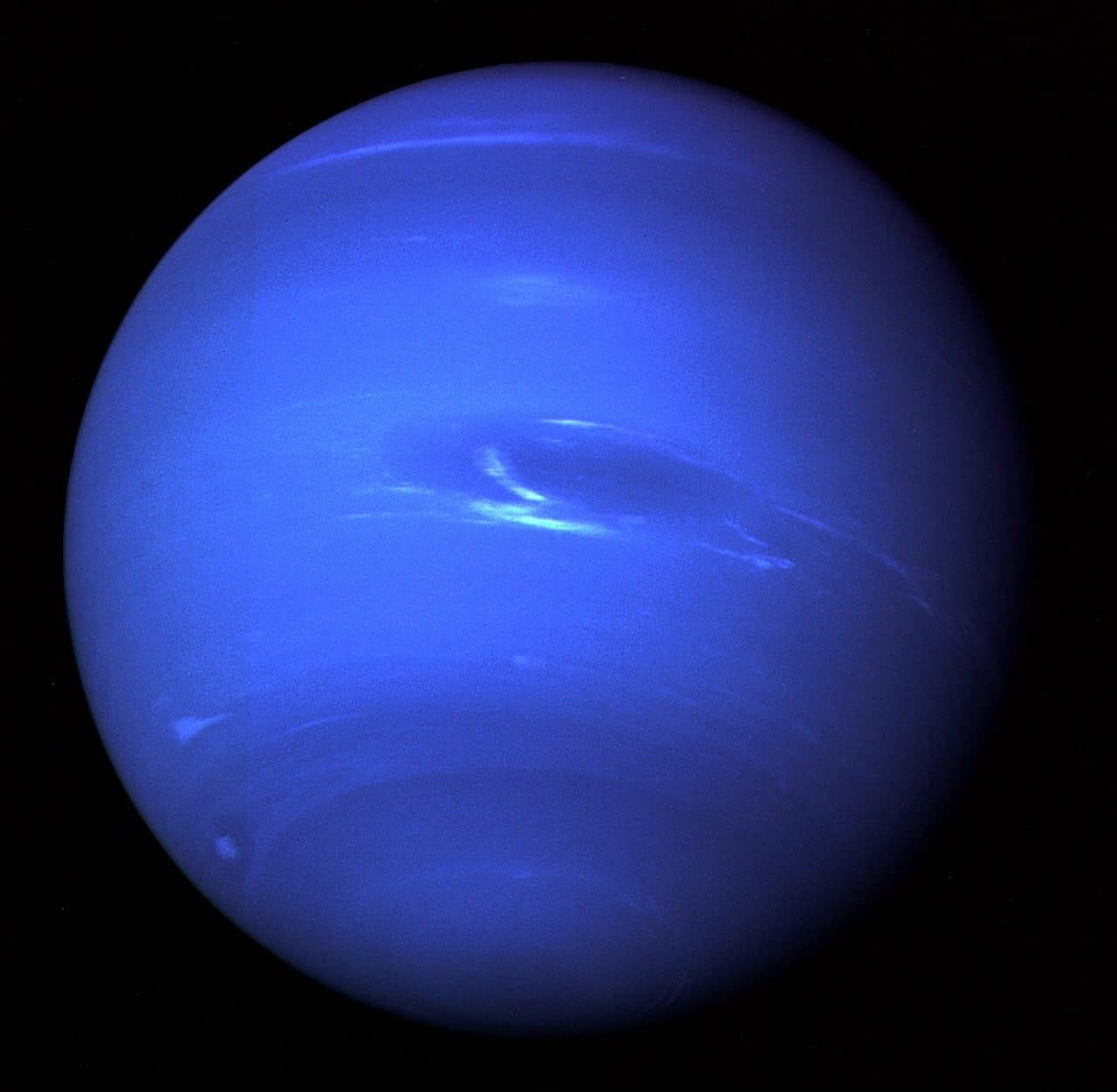
Windy, cold, dark, with more than a dozen moons and a blue hue derived from methane, it turns out to be Neptune, the planet that is furthest from the sun.
Neptune is a relevant concept both in the field of astronomy and in the field of mythology . It is also an important notion within astrology since those who dedicate themselves to it analyze the influence of each planet on the different signs of the zodiac .
Specifically, it must be kept in mind that Neptune is the Spanish name given to one of the giant nucleated planets within the solar system . Those who have analyzed its characteristics highlight among its particularities its cold essence, its dark appearance and its extremely windy atmosphere. When determining its distinctive features, the information that could be obtained thanks to the arrival of a space probe , named Voyager 2 , to this territory whose name pays tribute to the deity that Roman mythology recognizes as god of the sea, was key.
Although they are not easily observed, Neptune , the planet that is furthest from the sun and has only Uranus as a neighbor, has three pairs of rings. It also has a total of fourteen moons . Of them, the one that has achieved the most popularity or recognition is Triton (moon of Neptune) , while Hippocampus is a small satellite discovered a few years ago that, specialists believe, arose as a result of a detachment experienced by the moon identified as Proteus a following a collision involving a comet . Nereid (another moon of Neptune) was identified in 1949 by astronomer Gerard Peter Kuiper and, although information regarding its surface is scarce, its elliptical orbit has not gone unnoticed.
Neptune Highlights
The references indicated above help to know a wide variety of details about the planet whose existence was confirmed in 1846, thanks to calculations and research by Johann Gottfried Galle , Urbain Le Verrier and John Couch Adams , but other highlights of Neptune still remain to be mentioned. .
Before continuing to tell what this astronomical object is like, it is worth stopping at the discovery of Neptune . Since it cannot be detected with the naked eye in the immensity, to realize its existence it was essential that the telescope was invented. Although there are records that indicate that in different sections of History Galileo Galilei , Jerome Lalande and John Herschel noticed it and mathematical calculations were carried out that predicted it, at that time it was confused with a fixed star close to Jupiter .
Based on analysis of the surface and structure of this large blue territory, it has been determined that it is an ice giant without a solid surface. Yes, a mass corresponding to a mixture of ammonia, methane and water settled on a rocky center or axis has been recognized there.
Regarding the winds that blow on it, scientists have estimated that they are up to nine months more powerful than those recorded on Earth and three times stronger than the winds of Jupiter .
The annual season in these distant lands is very extensive: it is estimated that Neptune , where each day lasts 16 hours, requires the equivalent of 165 Earth years to complete its journey around the sun.

Next to Neptune, the planet that is furthest away from the sun, there is only Uranus.
large dark spot
In 1989, a NASA probe named Voyager 2 detected for the first time a large dark spot that immediately aroused the interest of experts and motivated research work.
At first it was believed that it had similarities with the great red spot seen on Jupiter , but over time the idea of comparing it more, from the concept of an atmospheric hole, to the ozone layer characteristic of the Earth gained strength. More precise observations led to the conclusion that this dark-tinted depression was located in Neptune's atmosphere and was colored by a light hue that was attributed to white clouds.
In 1994, through the Hubble telescope, the photographic record of that atypical area was updated. By then, there were no longer traces of the spot and specialists were unable to decipher whether this phenomenon was the product of a Neptune storm or a hole that was completely covered.

Roman mythology considers Neptune as the god of the oceans, who in Greek mythology finds his equivalent in the figure of Poseidon.
Neptune beyond science
When approaching Neptune beyond astronomical science, cultural references accumulate.
On Madrid soil, for example, there is a neoclassical fountain dedicated to the god of the sea in which Neptune is represented holding a trident and being transported in a carriage drawn by sea horses. Different marine species appear around that car of Neptune .
Those who enjoy the adventures of SpongeBob SquarePants know, however, that in that cartoon series the king of the seas is called Neptune , the same name given to a subway station in Santiago, Chile .
Taking as inspiration the identity of the Roman god of the seas or Poseidon (Greek equivalent), a notion framed in geology was created: neptunism . It is a theory with scientific roots that, at the end of the 18th century, was proposed by the German-born scientist Abraham Werner . This postulate indicated that the crystallization of minerals could explain how the rocks distributed in the oceans originated. Over time, this idea was debated and finally became obsolete, although many researchers believe that Neptunism is not so wrong in its description since sedimentary rocks could be generated by a process similar to that mentioned by that current.
